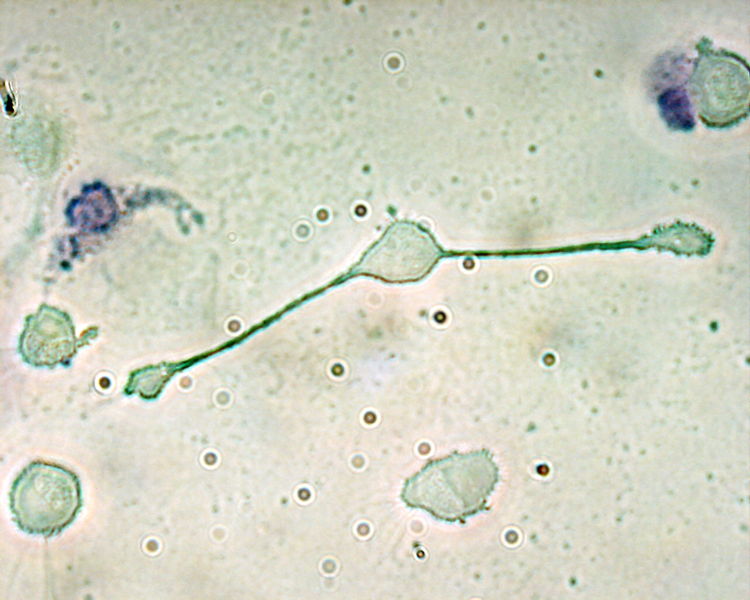
This webpage was produced as an assignment for an undergraduate course at Davidson College.
Cellular Immune Response
The cell-mediated immune response to infection by Legionella pneumophila is by no means remarkable. Like with any other bacteria, macrophages, dendritic cells and other phagocytes are attracted by the mechanisms of the innate immune response. These antigen presenting cells phagocytose the pathogen and present it to T-cells (Blander and Horwitz, 1991). The T-cells either continue killing the bacteria or begin to activate other components of the adaptive immune system. Because L. pneumophila is an intracellular bacteria, the cell-mediated immune response must act quickly to control the infection before the invaders are hidden and unreachable inside their phagosomes (Horwitz, 1983).

A macrophage stretching to phagocytose pathogen. Used with permission by CC-BY-SA-2.0.
The importance of cell-mediated immunity in the eradication of L. pneumophila is illustrated by looking at those individuals who are most susceptible to the sickness. Transplant recipients, AIDS patients, and those on corticosteroid treatments (like dexamethasone) are those who commonly fall victim to infection (Kikuchi, 2004). These patients are all similar in that they all have depressed levels of T cells, which are the cornerstones of cellular immunity. CD4+ T helper cells are particularly important to the clearance of a L. pneumophila infection because these T cells target intracellular pathogens and are able to activate other T cells and B cells to continue hunting the killer (2004). Without T cells, the body must rely on the innate immune response to corral and destroy the bacteria. This method often fails, demonstrated by the fact that the infections in immuno-suppressed individuals are far more severe and often fatal (2004).
The cell-mediated response against L. pneumophila, while the most important immune response, is ultimately flawed. Unlike the cellular immune response against extracellular bacteria, phagocytes do not always succeed in phagocytosing the bacteria and presenting it as antigen on its surface MHC II. Clemens and Horwitz (1993) found that MHC molecules do not grow more dense on the phagosomes membrane after engulfing L. pneumophila. With most antigen presenting cells, MHC molecules are upregulated after a pathogen is phagocytosed. Leishmania amazonensis, for example, causes the accumulation of MHC II molecules on the phagosomal membrane immediately after it is engulfed. These findings suggest that L. pneumophila are not presented as efficiently by antigen presenting cells which leads to the stunting of the overall effectiveness of the cell-mediated immune response.
Works Cited
Blander SJ, and MA Horwitz. 1991. Vaccination with Legionella pneumophila membranes induces cell-mediated and protective immunity in a guinea pig model of Legionnaire’s disease. J. Clin. Invest. 87:1054-1059.
Clemems DL and MA Horwitz. 1993. Hypoexpression of major histocompatibility complex molecules on Legionella pneumophila phagosomes and phagolysosomes. Infection and Immunity 61(7):2803-2812.
Horwitz MA. Cell-mediated immunity in Legionnaire’s disease. J. Clin. Invest. 71:1686-1697.
Kikuchi T, Kobayashi T, Gomi K, Suzuki T, Tokue Y, Watanabe A, and T Nukiwa. 2004. Dendritic cells pulsed with live and dead Legionella pneumophila elicit distinct immune responses. The Journal of Immunology 172:1727-1734.